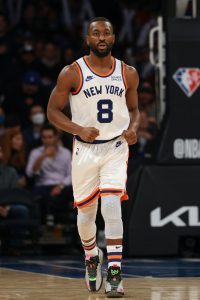[UPDATE: This tracker is no longer being updated as of February 14, 2022.]
After finishing the 2019/20 season in a Walt Disney World bubble in Florida and spending much of the 2020/21 season playing in front of empty or half-full arenas, NBA teams had hoped to recapture a sense of normalcy in ’21/22.
However, while the season got off to a promising start, an increasing number of players have been affected by COVID-19, resulting in clubs playing shorthanded as outbreaks impact rosters around the league.
Players who test positive for the coronavirus have been required to remain in the NBA’s health and safety protocols for at least six days or until they return two consecutive negative tests at least 24 hours apart. Players who are unvaccinated have also been required to enter the protocols when they’re deemed to be a close contact of someone who tested positive — they can exit the protocols after a certain number of consecutive negative tests across multiple days.
We’re hopeful that in a matter of weeks, the number of players in the health and safety protocols will decrease significantly, rendering a tracker unnecessary. But for the time being, there are so many players in the protocols that it makes sense to compile the full list in one place in order to monitor which teams are most affected.
A few notes about this tracker:
- Our goal will be to update the list multiple times per day (if necessary) on weekdays, and at least once per day on weekends.
- The list will only include players, not coaches or other staffers.
- We’ll remove names from the list once they’ve “cleared” the health and safety protocols and reported back to their teams, even if they haven’t yet met the conditioning requirements and passed the cardiac tests necessary to return to game action.
The players currently in the NBA’s health and safety protocols are listed below. If you have any questions or corrections, please leave a comment below or use our contact form.
Updated 2-14-22 (9:42am CT)
Atlanta Hawks
- None
Boston Celtics
- None
Brooklyn Nets
- None
Charlotte Hornets
- None
Chicago Bulls
- None
Cleveland Cavaliers
- None
Dallas Mavericks
- None
Denver Nuggets
- None
Detroit Pistons
- None
Golden State Warriors
- None
Houston Rockets
- None
Indiana Pacers
- None
Los Angeles Clippers
- None
Los Angeles Lakers
- None
Memphis Grizzlies
- None
Miami Heat
- None
Milwaukee Bucks
- None
Minnesota Timberwolves
- None
New Orleans Pelicans
- None
New York Knicks
- None
Oklahoma City Thunder
- None
Orlando Magic
- None
Philadelphia 76ers
- None
Phoenix Suns
- None
Portland Trail Blazers
- None
Sacramento Kings
- None
San Antonio Spurs
- None
Toronto Raptors
- None
Utah Jazz
- None
Washington Wizards
- None
 However, it also features several players whose names have already popped up in trade rumors in the months since they were signed, such as Celtics guard
However, it also features several players whose names have already popped up in trade rumors in the months since they were signed, such as Celtics guard